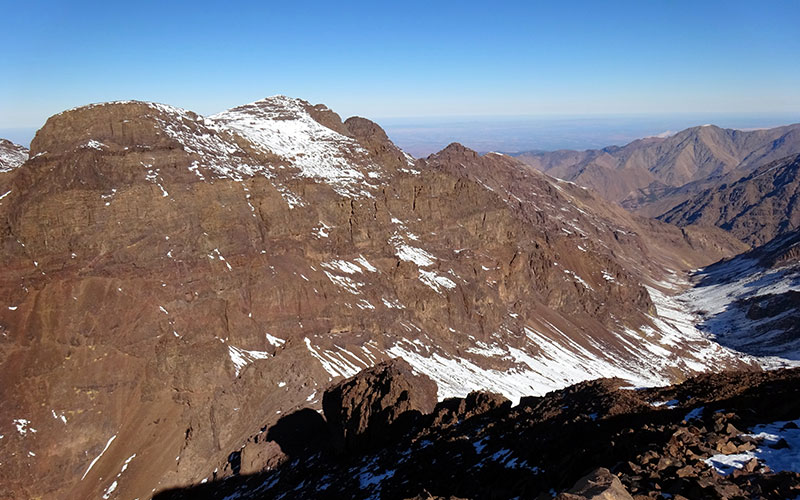Mount Afella: Exploring Nature’s Majesty in the Moroccan Atlas

Hidden within the rugged Moroccan Atlas Mountains, Mount Afella stands as a remarkable treasure. This striking peak, a part of the High Atlas range, beckons hikers with an unparalleled chance to embrace Morocco’s natural wonders and cultural richness. In the following article, we will explore the geographical placement of Mount Afella, the unique hiking experience it offers, the diverse flora and fauna that grace its slopes, the awe-inspiring vistas that await, the preparations and challenges associated with this adventure, and the vibrant cultural tapestry that colors the journey.
Geography and Location of Mount Afella
Mount Afella rises at an impressive height of around 3,050 meters (10,006 feet) above sea level. It is located in the eastern section of the High Atlas Mountains, near Imilchil. This part of Morocco is celebrated for its striking scenery, marked by deep valleys, verdant meadows, and a multitude of peaks that collectively weave a captivating tapestry of nature’s beauty. What’s more, Mount Afella is conveniently situated near the enchanting Lake Isli and Tislit, famously known as the “Bride and Groom” lakes, further enhancing the charm of this hiking destination.
The Trail and Hiking Experience of Mount Afella
Climbing Mount Afella presents an exciting yet demanding journey that typically spans two days. The expedition usually commences in the village of Imilchil, where arrangements can be made for guides and mules to assist in transporting supplies. This trek meanders through rugged terrain, pristine meadows, and steep inclines, delivering a diverse spectrum of hiking experiences.
A standout feature of this adventure lies in the opportunity to engage with the local Berber communities residing in the area. The Berber people boast a rich history of harmonious coexistence with the mountains, affording hikers a unique window into their traditional way of life. These interactions, be it sharing stories around a campfire or savoring a meal crafted from local ingredients, serve as cultural enrichments that seamlessly complement the region’s natural beauty.
Nature’s Wonders on Mount Afella and Spectacular Vistas
Mount Afella, like the rest of the Moroccan Atlas Mountains, is a haven for remarkable flora and fauna. During your hike, you’ll be greeted by various plant and animal life. The high-altitude meadows come alive with colorful wildflowers, including cheerful poppies and daisies. Among the scenery, juniper trees and almond groves provide not only shade but also a serene ambiance for hikers.
For wildlife enthusiasts, Mount Afella holds delightful surprises. Look for Barbary macaques, lizards, and various bird species, including the majestic lammergeier and the bearded vulture. Witnessing these creatures in their natural habitat adds a touch of wonder to your trek.
The pinnacle of hiking Mount Afella lies in the breathtaking panoramic views that unfold at every twist and turn. As you ascend, you’ll be treated to ever-changing landscapes, transitioning from lush meadows to rugged cliffs and deep valleys. When you reach the summit, you’ll be greeted with a view that is nothing short of awe-inspiring. On a clear day, your gaze can extend far beyond the High Atlas Mountains, offering vistas that reach the Sahara Desert in the south and the Middle Atlas in the north.
And, as the sun graces the sky, both sunrise and sunset on Mount Afella are truly enchanting. The interplay of light and shadows on the surrounding peaks and valleys creates a spectacle that leaves an indelible mark on all who embark on this journey.
Challenges and Preparations for Mount Afella
Hiking Mount Afella is a physically demanding adventure, necessitating good physical fitness and mental readiness. The challenges arise from high altitudes, steep inclines, and the potential variability in weather conditions. Proper equipment is essential to embark on this journey, including sturdy hiking boots, warm clothing, and a reliable backpack. Acclimatizing to the altitude is highly recommended, and spending a day or two in a nearby town like Imilchil before commencing the hike is a wise approach.
In addition to personal preparations, the local villages offer valuable assistance through guides and mules, aiding with navigation and carrying supplies. This not only eases the physical demands of the journey but also lends support to the local communities that rely on trekking tourism.
Amidst these preparations and challenges, Imilchil stands out as a place of cultural significance. It is renowned for hosting the annual “Festival of Betrothal,” a unique celebration of traditional marriage customs that brings together Berber tribes from neighboring regions. This festival presents a remarkable opportunity to immerse oneself in Berber traditions and is typically held in late September.
Furthermore, the village of Imilchil is home to the famous “Isli and Tislit” lakes, a pair of stunning natural lakes adorned with a beautiful legend. This legend is a testament to the rich folklore that weaves through the tapestry of this region, adding a touch of cultural enchantment to the journey.






